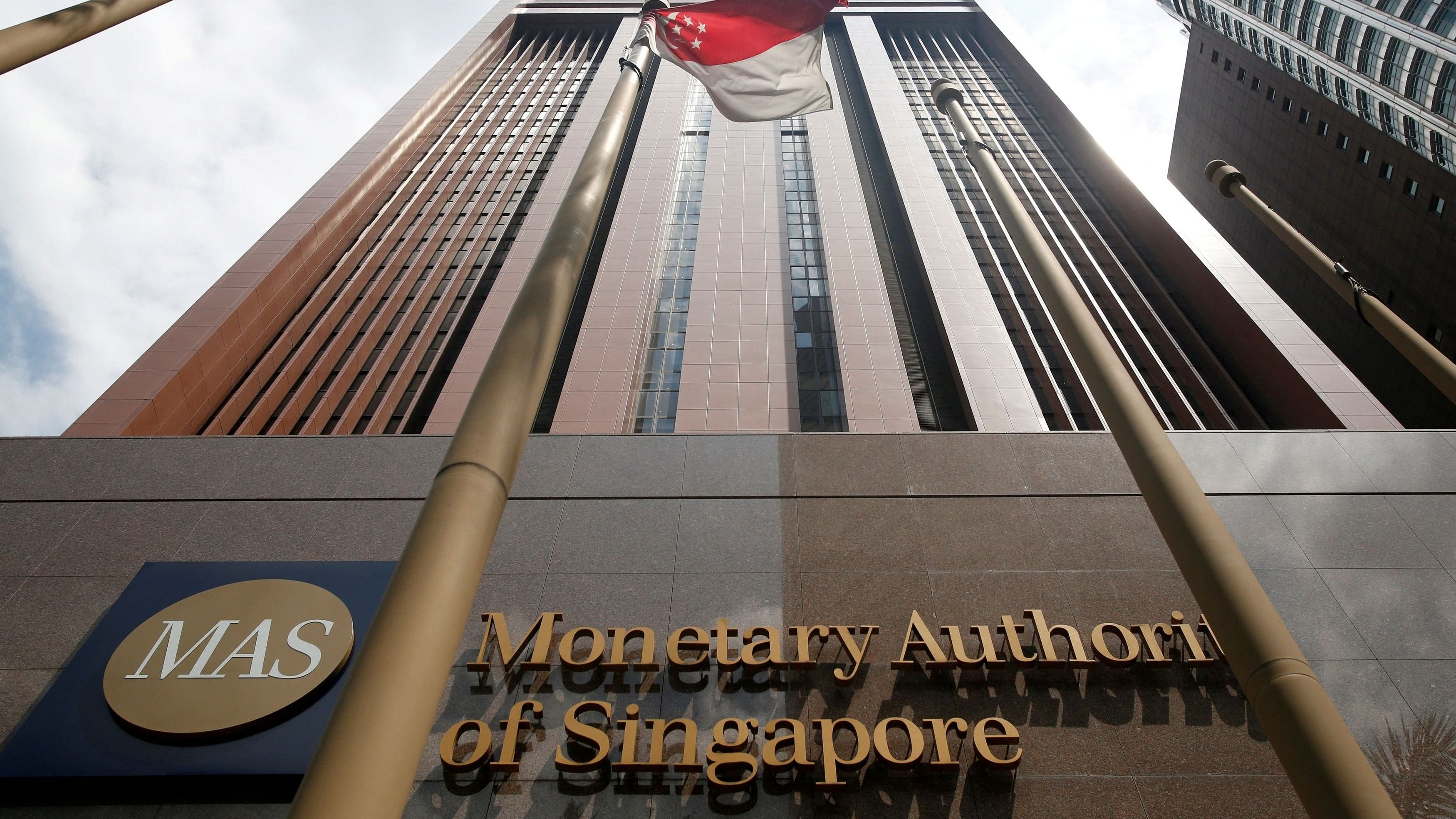
A view of the Monetary Authority of Singapore's headquarters in Singapore.
Credit: Reuters Photo
Singapore: Singapore's central bank on Monday left its monetary policy settings unchanged, as expected, as data showed the economy picked up pace in the third quarter and policymakers expressed optimism about the 2025 outlook.
The Monetary Authority of Singapore (MAS) said it will maintain the prevailing rate of appreciation of its exchange rate-based policy band known as the Nominal Effective Exchange Rate, or S$NEER.
The width and the level at which the band is centred would also be maintained, the MAS said.
"The risks to Singapore's inflation outlook are more balanced compared to three months ago," MAS said in a statement, adding that growth momentum has picked up.
"Barring a weakening in global final demand, the economy should continue to expand at a steady pace and keep close to its potential path in 2025," the central bank said.
MAS expects core inflation to decline further to around 2 per cent by the end of 2024.
Core inflation has tapered from a peak of 5.5 per cent in early 2023, and hit a 2-1/2 year low of 2.5 per cent in July before edging up to an annual 2.7 per cent in August.
Separately, advance estimates from the trade ministry showed gross domestic product (GDP) rose 4.1 per cent in the third quarter from a year earlier, accelerating from an annual 2.9 per cent pace in the second quarter.
"The growth outlook is more sanguine," said OCBC economist Selena Ling, adding that geopolitics and trade conflicts are concerns for the city state and there is an open window for a loosening from the MAS' next policy schedule in January 2025.
As a heavily trade-reliant economy, Singapore uses a unique method of managing monetary policy, tweaking the exchange rate of its dollar against a basket of currencies instead of domestic interest rates like most other countries.
It adjusts policy via three levers: the slope, mid-point and width of the policy band.
Singapore is often seen as a bellwether for global growth as its international trade dwarfs its domestic economy.
The trade ministry in August adjusted its GDP growth forecast range for 2024 to 2.0 per cent to 3.0 per cent, from 1.0 per cent to 3.0 per cent previously.
GDP growth in 2023 was 1.1 per cent, down from 3.8 per cent in 2022.
The MAS tightened policy five times between October 2021 and October 2022, including in two off-cycle moves, to tame inflation during the pandemic and amid global geopolitical instability. Since then, it has held steady as concerns over economic growth trumped inflation.